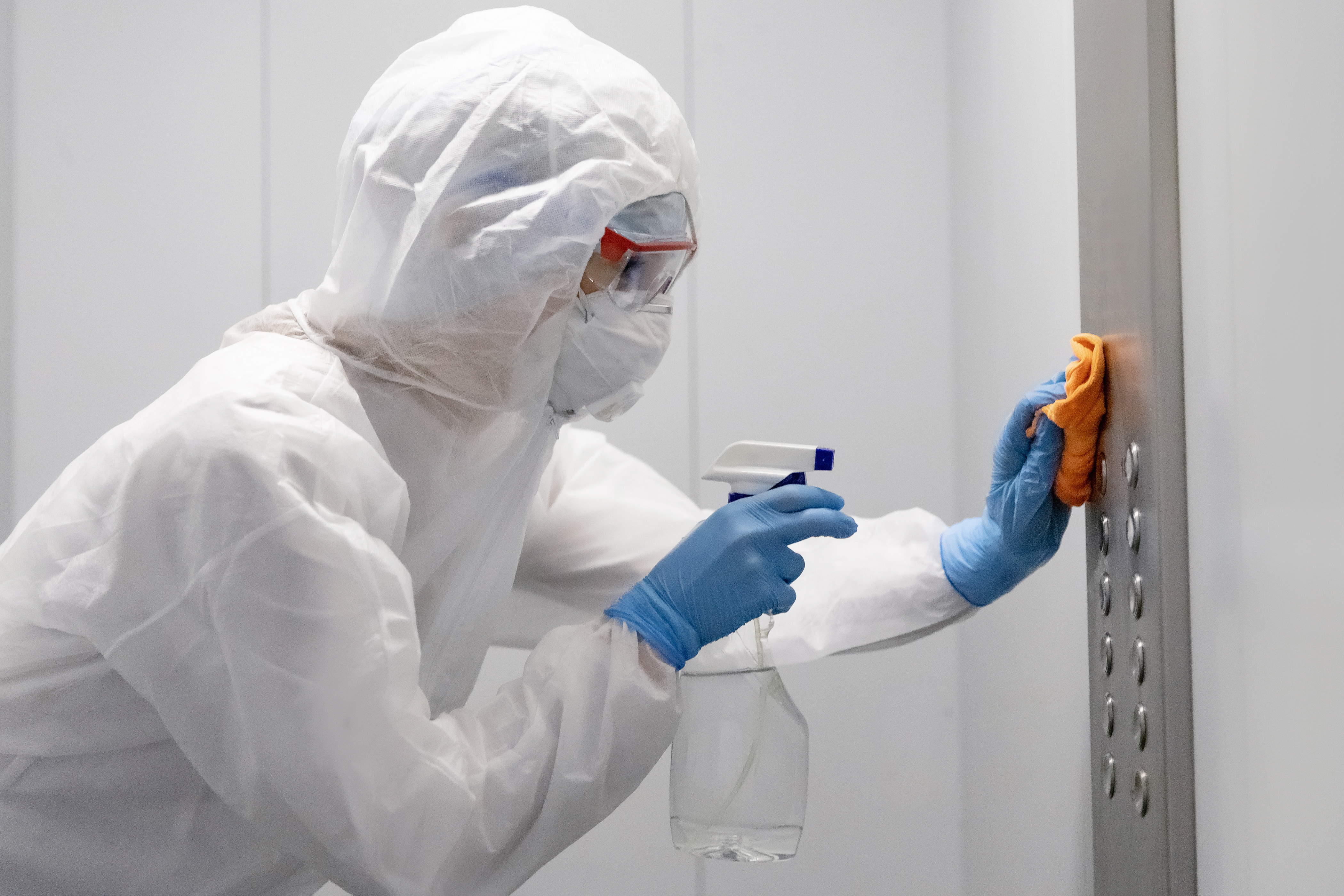
Vertical transportation is what makes multi-storey buildings possible. So, what happens when enclosed spaces, push buttons and efficiency become the problem rather than the solution? As buildings reopen, there are worries about physical distancing and touching surfaces. Both are a concern in the case of elevators where people are required to be in close proximity and the elevator operates by people pressing buttons. Not long ago, seeing a stranger pressing an elevator button with a pen may have surprised you. Now, in the midst of the pandemic, this behavior seems “normal”. High-rise tenants are using toothpicks, elbows, and even their keys to avoid contact with elevator buttons. As a result, the elevator industry has been pushed to fast track its technology.
So, what will the post-pandemic elevator look like?
Kick Buttons
- Simply press your shoe on the hall or car station buttons to call the elevator or select your floor and receive a hands-free elevator experience.
Copper Buttons
- Copper buttons replace plastic or stainless steel. These surfaces are believed to host the coronavirus for up to seven days, whereas copper has anti-microbial properties.
Self-Cleaning Elevator Button Cover
- Elevator buttons are one of those facility touchpoints that are touched by almost everyone but never cleaned. Button covers turn those nasty high traffic public elevator buttons into continuously self-cleaning surfaces.
Elevator Touchscreen System
- A digital solution that replaces traditional pushbuttons. Though no built-in antimicrobial technology, the smooth glass surface is an easy surface to clean unlike mechanical buttons that have areas where contaminants can be trapped.
Voice & Facial Commands
- Major elevator companies are also exploring the use of voice commands and facial recognition to operate elevators.
Holograms
- Technology is being developed in China that uses a hologram to project virtual buttons into the air.
Destination Dispatch
- One technology that is found in high-end office towers across the country is a system dubbed destination dispatch in which riders enter their floor on a touchscreen and are directed to a specific elevator with others going to the same floor or vicinity. No more stopping at every floor. Advanced destination dispatch systems are tied into turnstiles where employees swipe their cards for entry to office towers. The system automatically summons an elevator and directs the user to the correct one.
- Ultra-violet light devices are being embedded into the handrails of escalators to disinfect as they roll underneath. As well, systems are being used that detect when an elevator is empty and then cleans the cabin with UV light or even mist disinfectant spray.
Existing Technology
- Existing Technology is also being repurposed to handle the pandemic. For instance, load-weighing devices that sense how many people are on board an elevator can be used to monitor physical distancing. For example, if it was set above 80 percent before, it is now set at about 20 percent. So, if two people get on the ninth floor, the elevator will skip a call at the fifth floor to go back to the lobby. Once those people get off, it will go back to that call on five.
Some of these technologies are already in use. Many hospitals use UV disinfectants inside their elevators, and “destination dispatch” elevators have been a feature of recent top-tier office and residential towers, such as Hudson Yards.
Such digital upgrades are likely to become more common as elevators are built and modernized with the pandemic and social distancing in mind. In doing so, these companies are accelerating the arrival of the next generation of elevators: hands-free, clean, and “smart”.
FIELDBOSS stays current on industry trends to keep you informed on what’s happening in the elevator world. Read our blog and sign up for our newsletter for all the latest news.